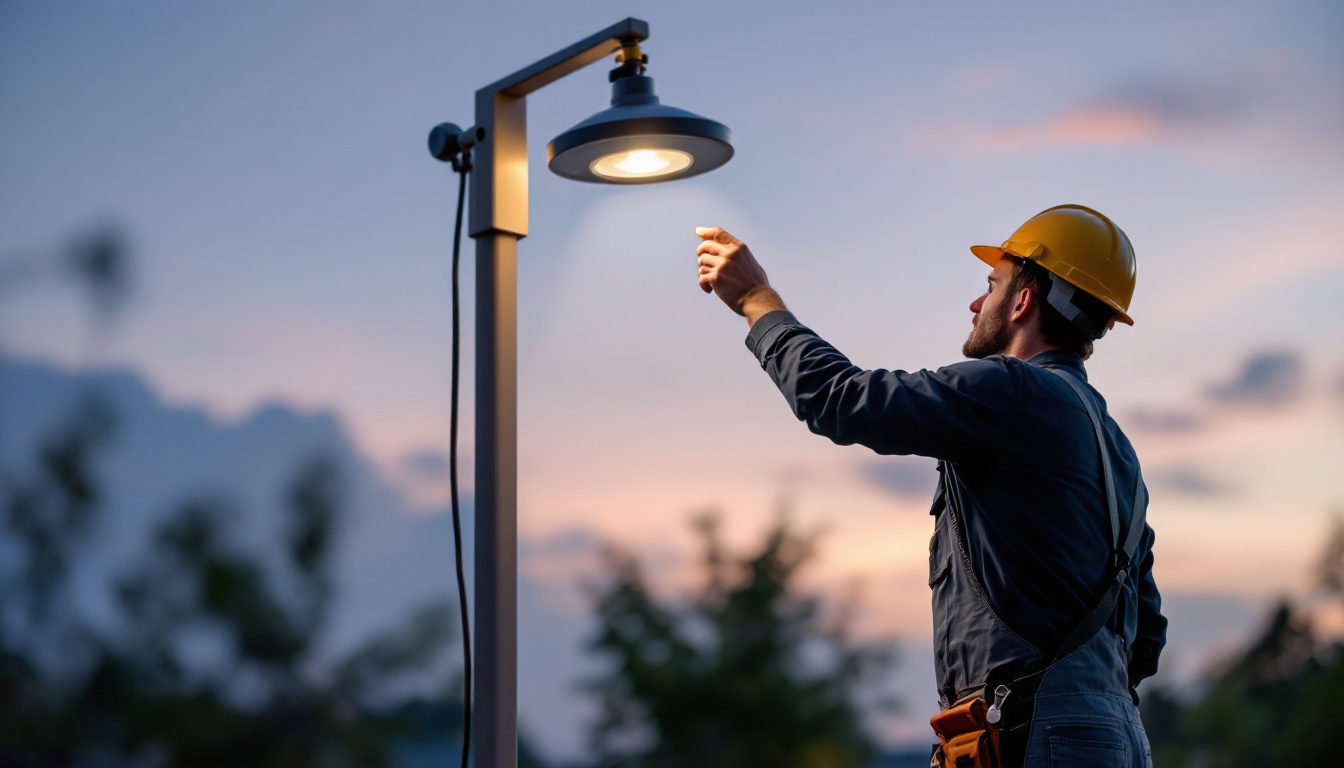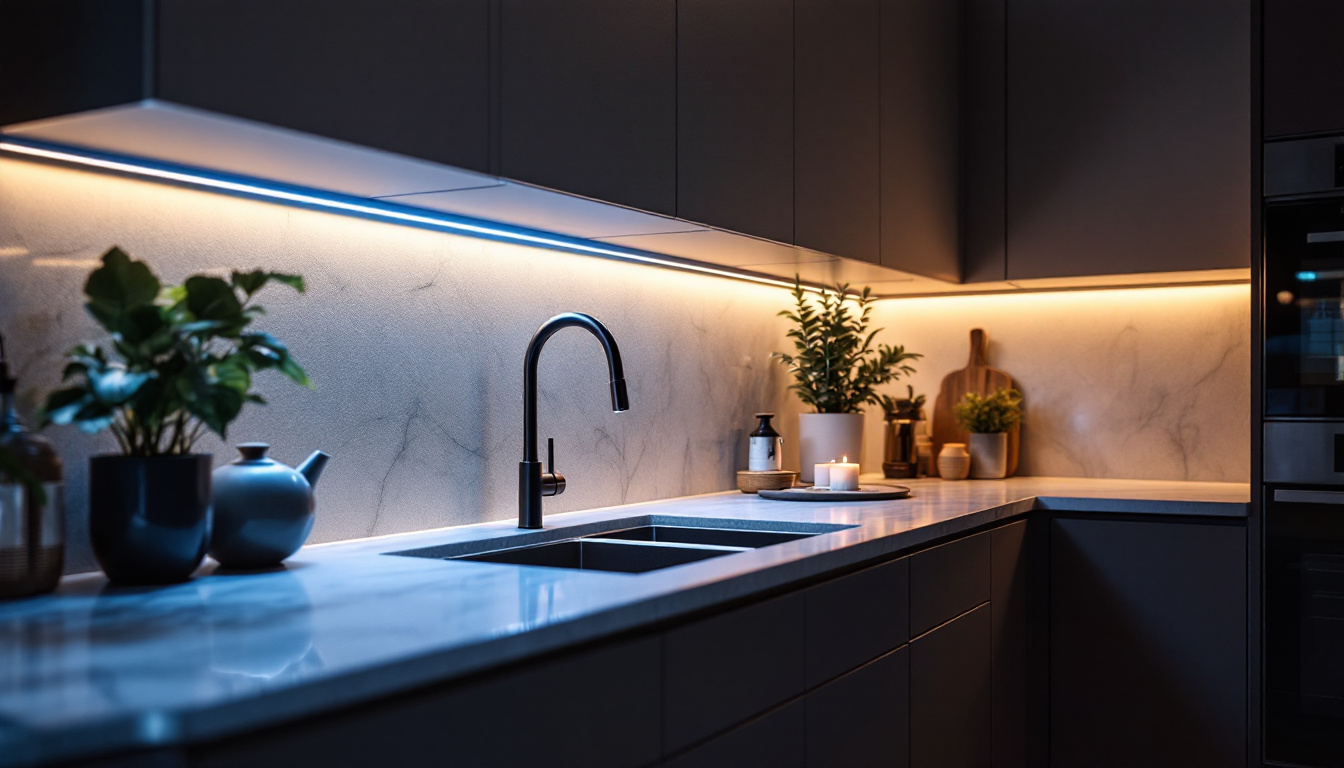
In the ever-evolving landscape of outdoor lighting, large solar lamps have emerged as a popular choice for both residential and commercial applications. For lighting contractors, understanding the nuances of these solar-powered fixtures is essential for delivering quality installations that meet client expectations. This article delves into various aspects of large solar lamps, offering valuable tips and insights to help lighting contractors excel in their projects.
Large solar lamps are designed to harness solar energy, converting it into light during the night. They are equipped with solar panels, batteries, and LED lights, making them a sustainable and cost-effective lighting solution. As energy efficiency becomes increasingly important, these lamps provide an eco-friendly alternative to traditional lighting methods. Their ability to operate independently of the electrical grid not only reduces energy costs but also minimizes the carbon footprint associated with conventional lighting systems.
When selecting large solar lamps for a project, it is crucial to consider factors such as brightness, battery capacity, and the quality of materials used. Understanding these components will enable contractors to make informed decisions that align with their clients’ needs. Additionally, the installation location plays a significant role in the performance of solar lamps; areas with ample sunlight exposure will yield better results, while shaded locations may require lamps with higher battery capacities to ensure adequate lighting during the night.
Each large solar lamp typically consists of several key components that work together to provide effective illumination. Familiarity with these parts is essential for contractors aiming to provide optimal installations. Moreover, understanding how these components interact can help in troubleshooting and maintenance, ensuring the longevity of the solar lamps.
Lighting contractors should be aware that large solar lamps come in various styles and designs, each suited for different applications. Understanding these types can help contractors recommend the best options to their clients. Beyond aesthetics, the choice of lamp type can also influence the functionality and effectiveness of outdoor lighting.
Proper installation is crucial for maximizing the performance of large solar lamps. Lighting contractors should adhere to best practices to ensure that the lamps function effectively and meet client expectations.
Before installation, conducting a thorough site assessment is essential. Factors such as sunlight exposure, the positioning of surrounding structures, and landscaping elements can significantly impact the performance of solar lamps.
Contractors should identify the optimal locations for solar lamps, ensuring they receive adequate sunlight throughout the day. Avoiding shaded areas will help maximize energy absorption and ensure reliable nighttime illumination.
When installing large solar lamps, it is vital to follow manufacturer guidelines for mounting. This includes ensuring that the solar panel is angled correctly to capture maximum sunlight. Additionally, securing the lamp firmly will prevent it from being dislodged by wind or other environmental factors.
For post-mounted lamps, contractors should ensure that the post is sturdy and appropriately anchored. Wall-mounted lamps should be installed at a height that provides optimal light coverage while remaining accessible for maintenance.
Regular maintenance is key to prolonging the life of large solar lamps and ensuring they operate efficiently. Lighting contractors should educate clients on basic maintenance tasks and common troubleshooting techniques.
To keep solar lamps functioning at their best, routine maintenance tasks should be performed periodically. This includes cleaning the solar panels to remove dust and debris, which can hinder energy absorption. A simple wipe with a damp cloth can significantly improve performance.
Additionally, inspecting the batteries for any signs of wear or damage is essential. Replacing batteries as needed will ensure that the lamps continue to provide reliable lighting.
Even with proper maintenance, issues may arise with solar lamps. Contractors should be prepared to troubleshoot common problems. For instance, if a lamp is not illuminating at night, it may be due to insufficient sunlight exposure during the day or a faulty battery.
In such cases, contractors can check the positioning of the solar panel and make adjustments if necessary. If the battery is found to be defective, replacing it with a high-quality alternative can restore functionality.
Large solar lamps are not only a practical lighting solution but also an environmentally friendly choice. Understanding the energy efficiency and sustainability aspects can help contractors advocate for these products to their clients.
By utilizing solar energy, large solar lamps contribute to reducing the carbon footprint associated with traditional lighting methods. They do not rely on fossil fuels, making them a sustainable option for outdoor lighting.
Contractors can emphasize to clients that investing in solar lamps aligns with a growing commitment to sustainability and environmental responsibility. This can be a significant selling point, especially for businesses looking to enhance their green credentials.
While the initial investment in large solar lamps may be higher than traditional lighting options, the long-term cost savings can be substantial. Solar lamps require minimal maintenance and do not incur electricity costs, leading to reduced operational expenses over time.
Contractors should present clients with a cost-benefit analysis that highlights these savings, helping them understand the financial advantages of choosing solar lighting solutions.
Effective communication with clients is crucial for ensuring satisfaction and successful project outcomes. Lighting contractors should focus on educating clients about the benefits and functionalities of large solar lamps.
Contractors should provide clients with clear and concise information about the features of the solar lamps being installed. This includes details on brightness levels, battery life, and expected performance in various weather conditions.
By setting realistic expectations, contractors can build trust and confidence with clients, ensuring they understand the benefits and limitations of solar lighting solutions.
After installation, encouraging client feedback can provide valuable insights into the performance of the solar lamps. This feedback can help contractors identify areas for improvement and enhance future projects.
Additionally, positive testimonials can serve as powerful marketing tools for contractors, showcasing their expertise in solar lighting solutions.
The solar lighting industry is continuously evolving, with new technologies and trends emerging regularly. Staying informed about these developments can help lighting contractors remain competitive and offer the best solutions to their clients.
One of the most exciting trends in solar lighting is the integration of smart technology. Smart solar lamps can be controlled via mobile apps, allowing users to adjust brightness levels, set timers, and monitor energy consumption.
Contractors should explore options for smart solar lamps and consider how they can incorporate these innovations into their offerings. This can enhance the user experience and provide clients with greater control over their outdoor lighting.
Advancements in solar panel technology are leading to more efficient energy conversion rates. As these technologies become more accessible, contractors can offer clients solar lamps that provide brighter illumination with smaller solar panels.
Staying informed about these advancements will allow contractors to recommend the latest and most efficient products, ensuring they remain at the forefront of the solar lighting market.
Large solar lamps represent a significant opportunity for lighting contractors to provide sustainable and cost-effective lighting solutions. By mastering the intricacies of these fixtures, from understanding their components to ensuring proper installation and maintenance, contractors can enhance their service offerings and meet the growing demand for eco-friendly lighting options.
As the industry continues to evolve, staying informed about trends and advancements will be crucial for success. By focusing on client education, effective communication, and embracing new technologies, lighting contractors can position themselves as leaders in the solar lighting market.
Ultimately, the mastery of large solar lamps not only benefits contractors but also contributes to a more sustainable future for outdoor lighting.
Ready to elevate your lighting projects with the best in solar technology? At LumenWholesale, we offer an exceptional range of high-quality, spec-grade solar lamps that will set your installations apart. With unbeatable wholesale prices and the convenience of free shipping, you can access premium lighting solutions that meet the highest industry standards. Don’t let middleman markups dim your project’s potential. Choose LumenWholesale for superior performance, affordability, and hassle-free bulk buying. Wholesale Lighting at the Best Value is just a click away—transform your lighting approach today.

Discover the ultimate guide to LED tape under cabinet lighting and learn how to future-proof your lighting projects.

Discover the transformative power of LED-lit stairs in modern design.

Discover why lighting contractors should prioritize solar path lighting in their projects.

Discover essential insights into staircase lighting with our comprehensive guide tailored for lighting contractors.